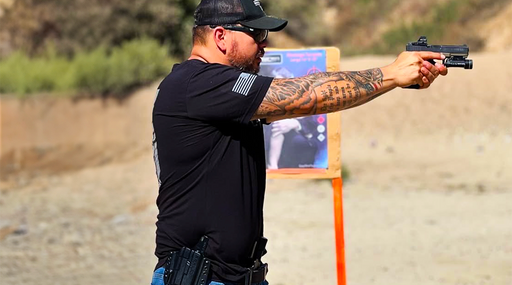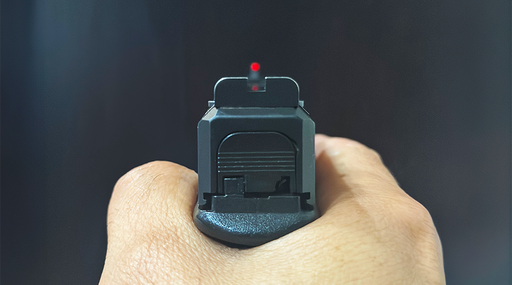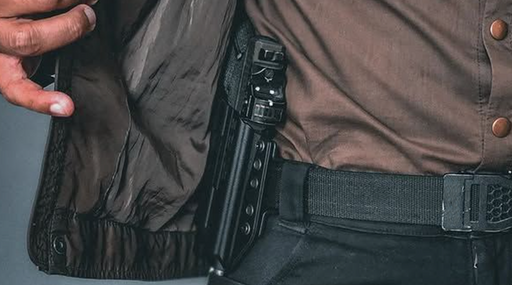
“You ought to have a gun” is where the concealed carry journey starts for many people. And since we live in a culture of convenience, where handing over a credit card and obtaining a product or service solves most of our problems, most people stop at buying a gun and maybe getting a concealed carry permit. But setting yourself up for success with self-protection is a journey, not a transaction. It’s a multidisciplinary art that’s unique to each person, and in which everyone has strengths and weaknesses to bring. And no sooner than a person masters the cardinal aspects of the Art, something inevitably changes—relocation to a new state, an injury, or a new job and new dress code—requiring the practitioner to rebuild his or her house of skills.
This article examines, in general terms, the areas of expertise one should seek to become handy in for the best chance of success. And when I speak of “best chances,” that’s with weighted value on preventing the need to go to the gun in the first place. For convenience, the topics are broken into five categories. So here, in no special order, are areas worth performing a self-evaluation on to decide which are in good shape and which are in need of attention.
Gun Handling
Under this category are a lot of skills from basic to advanced. The knowledge of gun safety rules and the habitual application of them are the bottom rung of this ladder. Knowing how to check load conditions is here. Then there's drawing and re-holstering from concealment while applying the safety rules. Having a truly concealed, comfortable carry method and, if possible, a sub-two second draw lives under this category. Sooner or later malfunction clearances and the various sorts of reloads will present themselves—you should know how to get the gun back in running order in a couple seconds without any fuss. Oh, did I mention cleaning, maintenance, and sight adjustments?
Seek first to become adept at all of the above with the gun(s) you own and carry. The real masters of this art will have these skills down for whatever action type or model is thrown their way.
Practically no one spends enough time in this area of the Art. But it is the one that, perhaps more than any other, will set you up to win a gunfight should you find yourself in one.
Marksmanship

In contrast to gun handling, marksmanship is where most people spend their time with guns, probably because it’s fun. But the thing is, anyone with basic instruction on sight alignment, grip, and trigger press will hit what they’re aiming at in the maximum seven-yard distance in which most violent encounters happen. So have fun, but challenge yourself with smaller targets, multiple targets, moving targets, targets at distance, timed drills, and so on. Don’t just plink, make your range time count.
Earlier articles have referenced the Seven Fundamentals of Marksmanship. If you can do each of them on purpose, with awareness that you’re doing them, you’ll be a great shooter. Avoid the temptation to overdo time in this category at the expense of others that aren’t quite as enjoyable.
Force Options

One problem with the “you ought to have a gun” mentality that leads to a false sense of security for people who have a gun but don’t carry it, or who carry it and don’t train, is that treating the gun like a lucky rabbit’s foot keeps a person from being a student of human behavior. Most violence can be avoided or prevented, and not all active threats call for deadly force.
Consider how a martial art other than guns, using an everyday object as a weapon, or carrying a less-lethal option such as pepper spray might fit into your self-protection plan. Seek training for areas that interest you.
Become a student of human behavior. Learn to be specific in the messages your own non-verbal and spoken communication sends out to the world. There is an article on pre-attack indicators on this blog if you want a brief of how to do a basic risk assessment for stranger violence. And there’s a wealth of information free online about improving your own abilities. Everyone, even those without an abiding interest in guns, can benefit from watching the dated but excellent series of lectures on “verbal judo” available on YouTube. Another area of study is “proxemics,” or the science of how and where we stand in relation to others and how that might reduce or enhance your odds of success if an encounter turns physical (including the ballistic kind of physical).
Mindset
A proper mindset is essential to self-protection. If you go looking for a fight, you’ll find one. Mindset is a factor that must be under your control if you’re armed. As I practice it, “mindset” is a series of simple values on which I base my interactions. These include 1) I will not be a victim of violent crime, 2) we are going to leave here happy, or at least peacefully in agreement today, and 3) if the person I’m interacting with cannot abide item 1, and if I cannot disengage and leave/escape, I will act swiftly to defend myself and won’t stop until I win. The simpler version of this comes in that iconic line from the movie Roadhouse: Be nice. Be nice until it’s time to not be nice. A previous article on this blog called “Are You Ready to Pull the Trigger?” examines mindset in greater depth.
It's up to you to decide to whom this sort of mindset applies. Think of yourself as the center of a circle. Your immediate family and closest loved ones are in a circle around that. The next outer circle might contain neighbors, coworkers, people you see on the regular but may not be especially close to. Outside that circle are total strangers. For sure, this mindset applies to the “You” and “Closest Loved Ones” circles. But does it apply to those subsequent ones? Decide that now, before a situation demands that you decide on the spot. Remember that playing the hero has many times resulted in severe injury and death to the person who tried to save a stranger. You’re under no obligation.
Legal

There are two aspects, as I see it, under this category of competence. The most basic is knowing where you can and cannot legally carry, and the specifics of laws as they apply to guns in your state. This is one area in which it’s easy to get bad information from sources like social media, and even from law enforcement. The best way to learn is to take a class from a local provider who knows the law in your area, and spend some time doing your own research of your state, county, or city’s laws. Understand that laws that apply to firearms are often tucked away in less obvious places like trespass, alcoholic beverage, and traffic codes.
Aside from understanding the black-and-white law, there is a need for every gun-carrying person to understand the parameters around the legal use of deadly force. If escape or a lesser level of force was an option, your case will likely not fare well. Likewise, if you contributed to the problem with the wanton display of a gun or verbalization that the average person would take to be inviting a fight. Unlike much of the violence seen in video games and movies, your use of deadly force must have been reasonable and necessary under the circumstances of the moment—not the circumstances of your life or neighborhood history. Andrew Branca’s Law of Self Defense is recommended reading for any US resident wanting to know more on this topic.
The legal arena is where I see many people making factually incorrect and wrong-headed assumptions. This is especially true as the nation expands permitless carry, which now exists in 26 states. Even though your state doesn’t require a permit, there are still places where carry is unlawful, and still an obligation to act within the purview of the law. It seems like common sense, nevertheless I often find myself reminding someone that s/he wasn’t born with knowledge of the law. There are still good reasons to take a concealed carry class, and this is a big one.
Summary
The journey of concealed carry is one that can be challenging, rewarding, and of ultimate benefit to you, your family, and community. For me, it represents a worthy pursuit that I have begun to see evolve as gun laws and age change my carry environment and the physical self also.
It is my hope that this article leads you to take inventory of which of these aspects represent strong points (for most people, marksmanship is right up there), and which areas could benefit from study and practice.





















Leave a comment
1 comment
Excellent article, concise but thorough. You hit the high spots, now it’s up to the individual to proceed accordingly. Unfortunately, it seems especially in Permitless carry states, that training is neglected with the mantra that it’s my right. Yes it is but getting trained is your responsibility. No, not mandatory training, but training to make you competent and successful if the elephant rears its head! Sgt. D.W.Stewart SPD #7244 (retired)